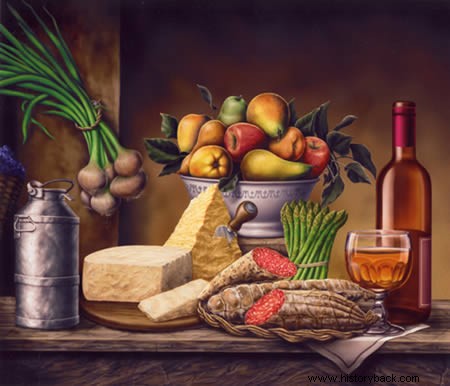
Ready-to-eat food for the table. A wealthy Florentine merchant from the Medici era could generally afford very expensive food
If we had the opportunity to be invited to lunch by a 16th century Florentine bourgeois, the typical social class, at the time, of merchants, we would certainly be faced with a menu rich and articulate, more than what could be proposed by a less wealthy Florentine (https://www.pilloledistoria.it/10105/storia-moderna/tavola-un-fiorentino-del-rinascimento).
Jean-Lucas Dubreton , in his famous book Daily life in Florence at the time of the Medici , enlightens us in this sense by reporting the dishes most commonly used in the situation just described.
The meal usually started with melon, followed by the berlingozzo, a dessert prepared with flour, sugar and eggs, after which the more substantial courses were started, namely boiled capons, sausages with veal, stew, roast chickens , or thrushes, turtledoves and pheasants, or trout.
A diet, as you can see, anything but light and dietetic, mainly based on meat and game, expensive foods, that not everyone could afford.
And since throat and spirit had to go hand in hand, to make the atmosphere more cheerful and friendly, everything was accompanied by good music, in particular that of castanets and the harp, two tools that were very popular at the time.
